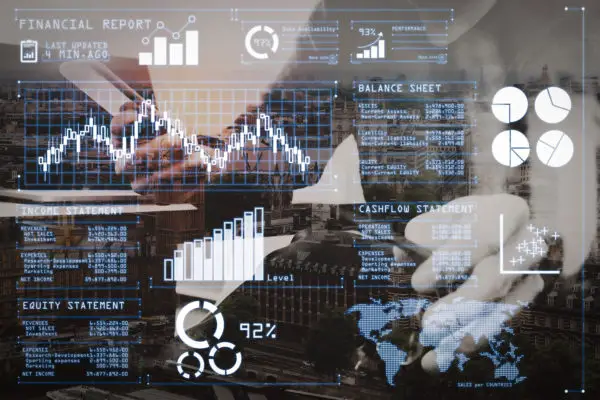Creating a Key Risk Indicator (KRI) involves several steps, each requiring careful consideration and planning. Here’s a step-by-step guide on how to create a KRI:
Identify Key Risks: The first step in creating a KRI is to identify the key risks that your organization faces. These could be operational, financial, strategic, or related to compliance. This step often involves input from various stakeholders across the organization.
Define the KRI: Once you’ve identified a key risk, you need to define a KRI that will help you monitor that risk. A good KRI should be closely linked to the risk, easy to measure, and predictive of changes in risk exposure.
For example, if one of your key risks is customer dissatisfaction, a potential KRI could be the number of customer complaints received each month.
Set Thresholds: After defining your Key risk indicator, you need to set thresholds that will trigger an alert if the KRI reaches a certain level. These thresholds should be based on your organization’s risk appetite and tolerance.
For example, you might set a monthly threshold of 50 customer complaints. If the number of complaints exceeds this threshold, it will trigger an alert.
Collect Data: To monitor your Key risk indicators, you must collect relevant data regularly. This might involve setting up systems to track and record data automatically or manual data collection processes.
Analyze and Report: Once you’ve collected the data, you must analyze it and report on the results. This might involve comparing the KRI to its threshold, analyzing trends over time, and reporting any significant changes or patterns.
Review and Update: It’s important to regularly review and update your KRIs to ensure they remain relevant and effective. This might involve adjusting thresholds, redefining KRIs, or even identifying new KRIs as your organization and its environment evolve.
Risk management plays an integral role in identifying potential risks that could impact the achievement of organizational objectives.
KRIs are metrics that provide insight into the likelihood of specific risks materializing and their potential impact on business operations. Creating effective KRIs requires careful consideration and analysis to ensure they accurately reflect the organization’s risk profile.
Organizations must identify potential risks that could harm their operations or reputation to create a KRI. This involves analyzing internal and external factors that could lead to financial loss, regulatory violations, reputational damage, or other adverse outcomes.
Once identified, relevant metrics must be selected to measure each risk’s likelihood and severity. Metrics should be quantifiable, objective, and aligned with industry best practices to ensure accuracy and consistency in measurement.
Finally, Key Risk Indicators must be continuously monitored and managed to ensure they remain relevant as new risks emerge or existing ones evolve over time.

Identify Potential Risks
The initial step in creating a key indicator involves identifying potential risks through a comprehensive analysis of internal and external factors that may impact the organization.
This process requires the use of brainstorming techniques to identify all possible scenarios that could pose a threat to the business.
Economic conditions, market trends, competition, regulatory changes, and technological advancements should be evaluated when assessing potential risks.
Once potential risks have been identified, the next step is to assess their likelihood and impact on the organization. Risk mitigation strategies can then be developed based on this information. These strategies aim to reduce or eliminate the likelihood or impact of these risks occurring.
Some examples of risk mitigation strategies include diversifying product lines, establishing contingency plans, implementing security measures, and adopting new technologies.
Businesses can thoroughly analyze internal and external factors using brainstorming techniques, develop appropriate risk mitigation strategies based on this information, and ensure they are adequately prepared for any challenges.
Select Relevant Metrics
Relevant metrics can be selected by thoroughly analyzing the organization’s goals and objectives. This selection involves understanding what drives success in the business, identifying areas where risks may arise, and determining which metrics are most closely tied to those risks.
Data analysis is an important part of this process, as it can help identify patterns and trends that may not be immediately apparent.
One way to select relevant metrics is through benchmarking. Benchmarking involves comparing an organization’s performance against industry standards or best practices.
To ensure that the selected metrics are relevant, involving stakeholders from across the organization in the selection process is important. These stakeholders should include individuals with expertise in different business areas who can provide unique perspectives on what metrics are most important for managing risk.
Organizations can create effective key risk indicators to help them achieve their goals while minimizing potential problems by involving diverse stakeholders in this process and using data analysis techniques like benchmarking.
Set Thresholds
Establishing appropriate thresholds is critical in ensuring that key metrics are effectively utilized for managing risk. It involves setting specific limits to the values of the metrics, which will trigger an alert whenever they exceed or fall below these limits.
Threshold customization enables organizations to tailor their risk indicators to their unique contexts, considering factors such as industry standards, regulatory requirements, and organizational goals.
Data analysis techniques are crucial in determining the appropriate thresholds for each metric. Organizations must conduct thorough analyses of historical data and use statistical methods to identify trends, patterns, and outliers.
Setting a threshold process helps them to determine the range of values that can be considered normal or acceptable for each metric and establish appropriate thresholds accordingly.
In addition to statistical analysis, organizations should consider other factors when setting thresholds, such as the impact on business operations or customer experience.
Establishing overly stringent thresholds may result in excessive alerts, leading to alert fatigue among risk managers or even disrupting normal business operations. Conversely, setting lenient thresholds may fail to detect significant risks until too late.
Considering all relevant factors during threshold customization and utilizing data analysis techniques carefully, organizations can create effective key risk indicators that enable them to manage potential risks before they escalate into major issues proactively.
Align with Organization’s Risk Appetite
Aligning an organization’s risk indicators with its risk appetite is crucial in effectively managing potential risks and ensuring that key metrics are aligned with the overall organizational strategy.
Risk tolerance refers to the level of risk an organization is willing to take on as it pursues its objectives. A clear understanding of this tolerance level is essential to ensure the key risk indicators align with the organization’s goals.
Moreover, understanding an organization’s risk culture is necessary to align key risk indicators and its risk appetite effectively. Risk culture refers to how an organization perceives and manages risks.
It encompasses all aspects of the organization, including its values, beliefs, attitudes, behaviours, and decision-making processes in relation to managing and responding to risks.
Effective alignment between key risk indicators and an organization’s overall strategy requires a thorough understanding of its risk tolerance and culture. This process ensures that the identified risks are consistent with the company’s objectives while remaining within acceptable levels of exposure.
Organizations must continuously evaluate their approach to managing risks by reassessing their tolerance levels regularly and updating their key performance indicators.
Monitor and Manage Risk
The effective management of risks requires a continuous process of monitoring and managing potential threats to the organization.
One way to achieve this is by regularly reviewing and updating Key Risk Indicators (KRIs) that help identify early warning signs of potential risks.
Key Risk Indicators can also inform decision-making processes, enabling organizations to make risk-management decisions based on data-driven insights.
Integrating KRIs into an overall risk management strategy helps ensure that all risks are identified, assessed, and managed effectively, reducing the likelihood of negative impacts on the organization’s operations or reputation.

Regularly Review and Update KRIs
Regularly reviewing and updating key risk indicators ensures they remain relevant to the organization’s changing risk landscape. This process involves analyzing the data collected from various sources, assessing the identified risks, and evaluating the effectiveness of existing KRIs.
Organizations may adopt strategies to ensure that KRIs are regularly reviewed and updated, such as setting up a KRI review committee or including KRI reviews in regular risk management meetings.
Importance of communication: Regular communication between the KRI review committee and other organizational stakeholders can help identify new risks, revise existing Key Risk Indicators or develop new ones.
The review committee can also communicate with external stakeholders, such as industry experts or regulatory bodies, to gather insights on emerging risks or best practices in KRI development.
Role of technology in reviewing and updating KRIs, technological advancements, organizations can now access tools such as automated risk monitoring systems that can flag potential issues based on predefined parameters. These tools enhance monitoring efficiency and provide valuable insights into the performance of existing KRIs.
Organizations may use data analytics to identify correlations between previously unknown risks and make informed decisions about updates to their KRIs.
Use KRIs to Inform Decision Making
To effectively manage risks, it is crucial to regularly review and update key risk indicators (KRIs). This allows organizations to stay up-to-date with potential threats and make informed decisions.
However, monitoring KRIs is not enough; they must be utilized meaningfully. Data analytics cannot be understated when it comes to using KRIs for decision-making.
Organizations can identify areas of concern by analyzing trends in KRI data before they become major issues. Additionally, data analytics can help determine which KRIs are the most relevant and effective for specific business operations.
However, it is important to note that utilizing KRIs in decision-making requires effective communication throughout the organization.
Leaders must ensure that all stakeholders understand the significance of these indicators and how they relate to overall business goals.
Integrate KRIs into Overall Risk Management Strategy
Integrating key risk indicators (KRIs) into an overall risk management strategy is essential for organizations to assess and mitigate potential risks effectively.
KRIs provide quantifiable metrics that help identify, measure, and monitor potential risks that may impact the organization’s operations, financial performance, reputation, or compliance with regulatory requirements.
Integrating KRIs into a company’s overall risk management strategy makes creating a comprehensive approach to mitigating identified risks easier.
Key Risk Indicator measurement is critical in creating an effective risk management strategy. Organizations must develop a framework that defines the appropriate set of KRIs based on their specific business environment and objectives.
The framework should also define how these KPIs will be tracked over time and what action should be taken if any deviations occur from established thresholds.
Incorporating KRI measurement alongside other risk mitigation techniques, such as regular auditing or scenario planning, helps create a holistic approach to managing organizational risks.
Integrating Key Risk Indicators into the broader risk management strategy enhances decision-making capabilities by providing valuable insights about potential threats before they escalate into significant organizational problems.
Frequently Asked Questions
How do you determine the importance of a specific risk in relation to others?
Determining the importance of risk in relation to others can be achieved through a quantitative or qualitative approach, with weighting factors assigned based on their level of impact and likelihood.
This analytical process allows for objective assessment and prioritization of risks.
What are some common mistakes to avoid when selecting relevant metrics?
When selecting relevant metrics, common pitfalls to avoid include focusing too narrowly on a single metric, using irrelevant or outdated data, and failing to consider the context of the metric.
Selection criteria should prioritize accuracy, relevance, and alignment with organizational goals.
How do you ensure that the set thresholds are realistic and achievable?
Realistic thresholds and achievable targets are determined by analyzing historical data, industry benchmarks, and expert opinions.
Regular performance reviews help ensure that the set thresholds remain realistic and attainable.
What are some best practices for aligning key risk indicators with the organization’s risk appetite?
Effective alignment of Key Risk Indicators (KRIs) with an organization’s risk appetite requires a comprehensive risk appetite assessment.
Key Risk Indicators should be selected based on their relevance to the organization’s strategic objectives and integrated into a robust KRI monitoring process.
How do you effectively communicate KRI results to stakeholders and decision-makers?
Efficient communication of Key Risk Indicator (KRI) results to stakeholders and decision-makers requires effective strategies and stakeholder engagement.
This includes clearly presenting KRIs, highlighting their significance, and discussing potential implications for the organization’s risk management approach.

Conclusion
Creating key risk indicators (KRIs) is crucial in identifying, monitoring, and managing organizational risks. The process involves identifying potential risks, selecting relevant metrics, setting thresholds, aligning with the organization’s risk appetite, and monitoring and managing risks.
To begin creating Key Risk Indicators, it is important to identify potential risks that may impact the organization. This requires thoroughly analyzing internal and external factors such as market trends, regulatory changes, operational processes, and business objectives.
Once potential risks have been identified, relevant metrics can be selected to track and measure their impact on the organization. These metrics should be specific, measurable, attainable, relevant, and time-bound (SMART).
Setting thresholds for each KRI is essential to identify deviations from normal levels before they escalate into major issues. It is important to establish clear rules for escalation when a threshold is breached so that appropriate actions can be taken promptly.
Additionally, KRIs need to be aligned with the organization’s risk appetite, which refers to its willingness to take on various types of risk in pursuit of its strategic objectives.
Finally, monitoring and managing risks require continuous vigilance through regular assessments of KRIs against established thresholds. Organizations must implement effective reporting mechanisms that enable timely identification of emerging issues related to KRIs while providing meaningful insights for management decision-making.
Creating key risk indicators involves a systematic approach that requires careful consideration of an organization’s potential threats and corresponding performance metrics used to monitor them effectively.
Aligning KRIs with the organizational goalposts for acceptable levels of risk exposure while regularly analyzing trends using actionable insights derived from data-driven analytics methods.
Organizations can proactively manage their enterprise-wide risk profile effectively over time, mitigating costly negative impacts resulting from unanticipated events or circumstances beyond their control.

Chris Ekai is a Risk Management expert with over 10 years of experience in the field. He has a Master’s(MSc) degree in Risk Management from University of Portsmouth and is a CPA and Finance professional. He currently works as a Content Manager at Risk Publishing, writing about Enterprise Risk Management, Business Continuity Management and Project Management.

